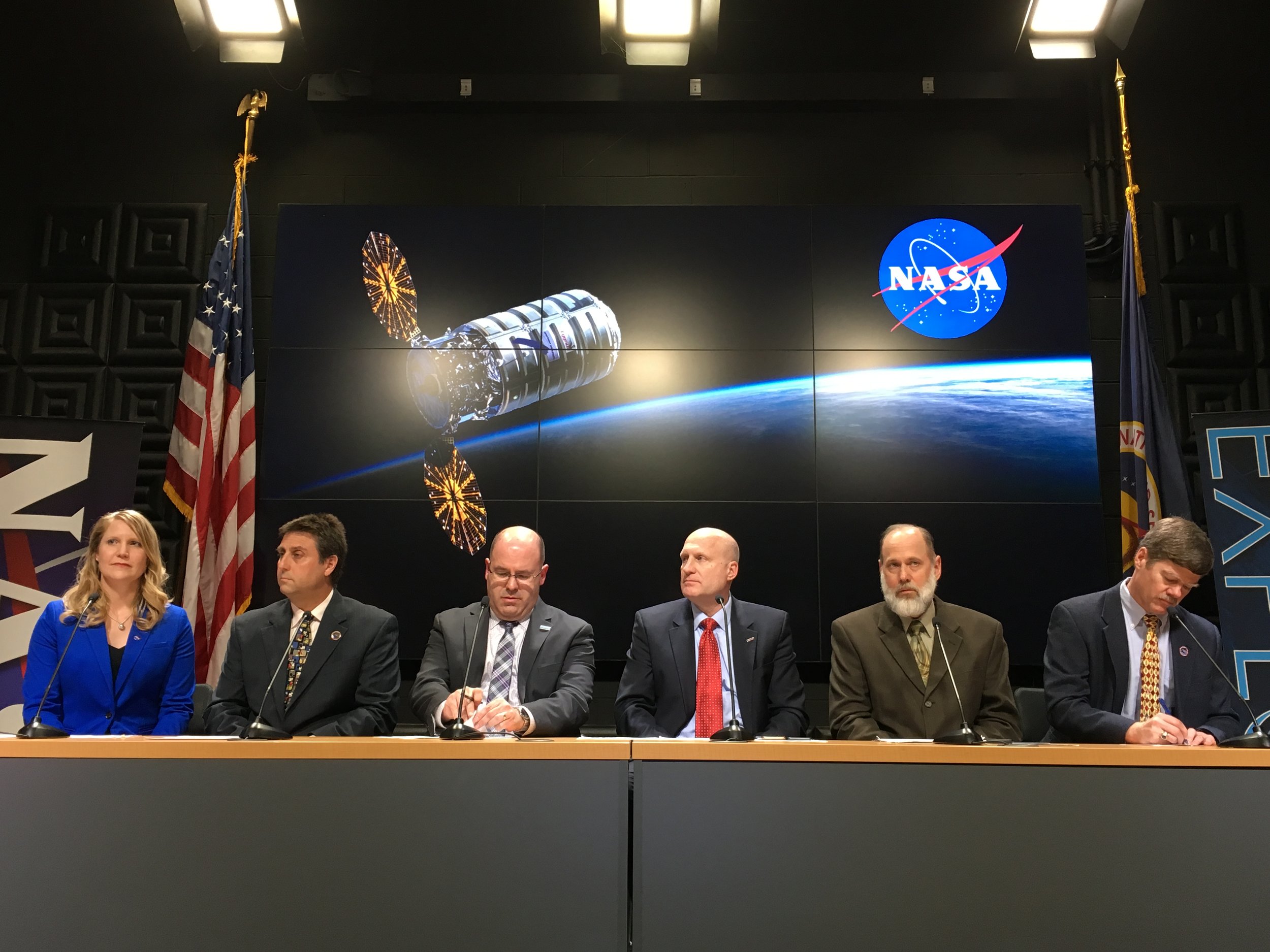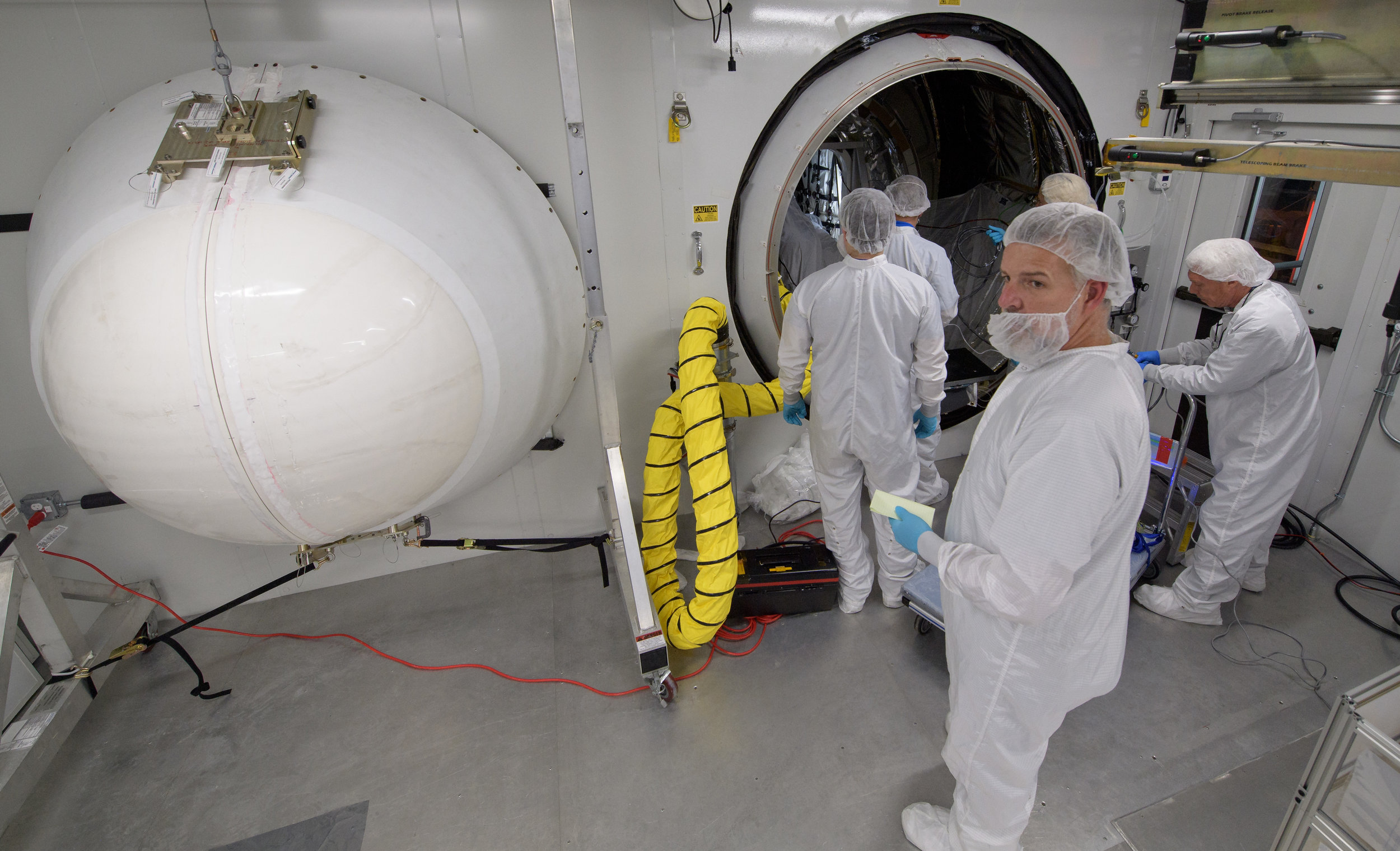Antares Rocket to Launch from Virginia Wednesday 17 April
On Tuesday 16 April at NASA's Wallops Flight Facility in Virginia’s Eastern Shore, there were two press conferences covering the mission parameters and payloads for the launch of a Cygnus spacecraft onboard an Antares rocket, resupplying the International Space Station with supplies and science as the NG-11 mission. NASA TV coverage of the launch will begin at 4:00pm EDT.
PRE-LAUNCH PRESS CONFERENCE (L-R):
Stephanie Schierholz, NASA Communications, NASA HQ
Joel Montelbano, Deputy ISS Program Manager, NASA JSC
Frank DeMauro, Vice President of Space Systems, Northrop Grumman
Kurt Eberly, Deputy Antares Program Manager, Northrop Grumman
Doug Voss, Range Deputy, NASA Wallops
Peter Hasbrook, Program Scientist, NASA JSC
Officials from NASA and Northrop Grumman outlined the mission in detail. Approximately 3,500kg (7,600 lbs) of payload, nearly half of it scientific experiments, will launch from Wallops/MARS, currently with a liftoff time of 4:46pm EDT tomorrow. In the most recent weather report, conditions are expected to be 95% favorable. With a 5 minute launch window, the next opportunity to launch will be around the same time on Thursday, with an 80% chance of favorable conditions. The next backup date, Friday, has only a 20% chance of good weather.
L-24hr Weather Data. (Image: NASA TV)
The Cygnus spacecraft will have a two day rendezvous period with the ISS, berthing to the station early Friday morning, with hatch opening in the afternoon. It is named the SS Roger Chaffee, after the Apollo 1 astronaut who never got to fly in space due to the tragic fire that took the crew's lives on the pad.
This flight has several firsts in the Cygnus/Antares program. The most talked about was the new “late loading” capability. The rocket is lowered to a horizontal position, and a mobile clean room, called the MPPF (Mobile Payload Processing Facility), wraps around the nose of the rocket. A “pop top” in Antares’s payload fairing reveals the access hatch of the Cygnus, allowing payload to be loaded just hours before launch.
The MPPF at Pad 0A. The facility allows access to the spacecraft via a “pop top” in the nose cone of the rocket. (Image: NASA TV)
Several time-sensitive and life-sensitive experiments are being inserted into the spacecraft overnight.
Normally, this process must be complete before the rocket is moved to the launchpad. Late-loading affords researchers greater freedom in the types of sensitive experiments that can be flown to space.
Inside the MPPF, technicians load the final payload into NG-11’s Cygnus tonight at Pad 0A. To the left is the Antares rocket’s “pop top” nose cone. (Photo: NASA/Bill Ingalls)
The next Cygnus-first will occur after departing the ISS this July. Instead of burning up in the atmosphere soon after departing, SS Roger Chaffee will stay in space for a year. Northrop Grumman is seeking to expand Cygnus’s capabilities by using it as a pure microgravity environment after departing the ISS. On the ISS, there are minor changes in gravity due to reboosts, humans moving in the station, and other small variations. Cygnus, on the other hand, will have no relative motion in its orbit. This allows even more types of experiments to be flown. In addition to its longer stay in orbit, the Cygnus will also deploy CubeSats after departing the ISS. As a test flight, SS Roger Chaffee will demonstrate that Cygnus is able to remain in space for longer durations.
Another first will occur with the launch of the next Cygnus mission, NG-12, in autumn of this year. It will be the first time two Cygnus spacecraft fly simultaneously, and is expected to prove to NASA the ability of Northrop Grumman to operate two spacecraft at once.
One important note in the conference included a request to boaters, pilots, and all nearby residents and visitors to research the upcoming range instructions. Being in the middle of the heavily trafficked Eastern Seaboard, Wallops launches frequently encounter range violations that risk postponing the launch. Please be aware of the launch window and the restricted zones.
Also, if you are within a few hundred kilometers of Chesapeake Bay or Delmarva, be sure to try and look towards Wallops at 4:46pm!
ad meliora
Images and videos courtesy of the Author, except where noted otherwise.
Cover image - Antares stands at Launchpad 0A prior to late loading (Image: NASA TV)






